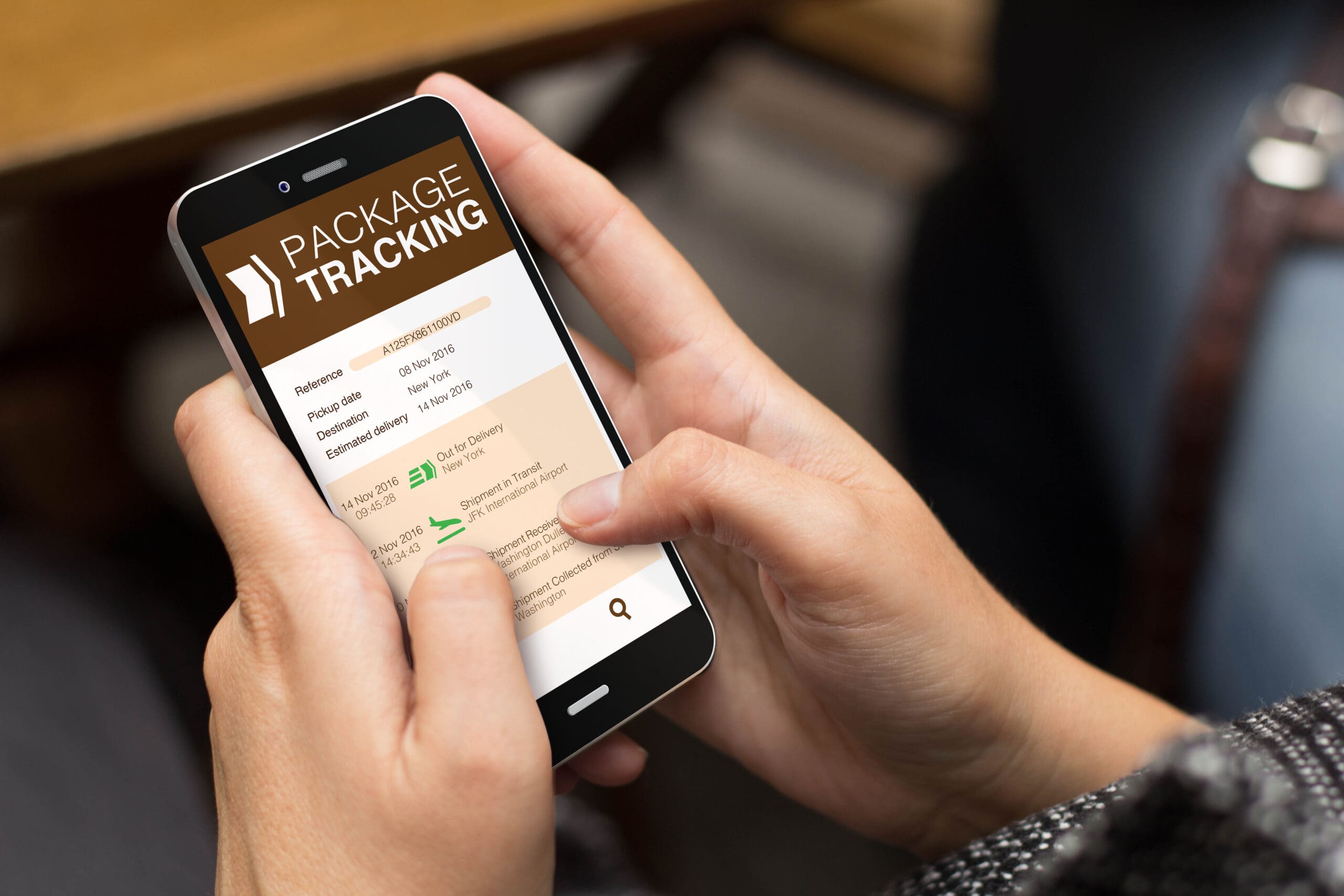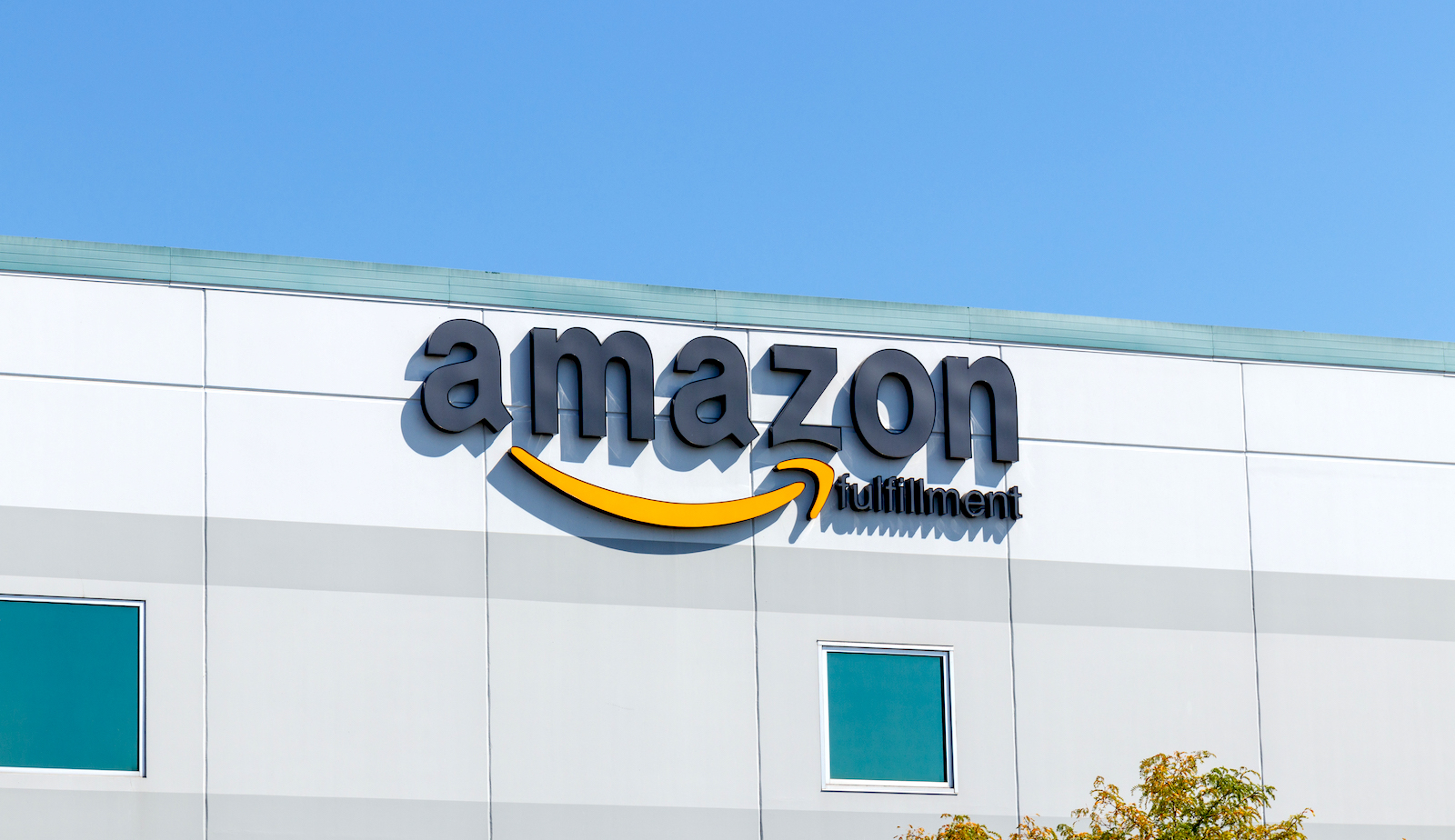Table of Contents
** Minutes
Understanding why shipment visibility matters
The benefits of shipment visibility
7 best practices to improve shipment visibility
Try AfterShip + ShipBob for shipment visibility & better customer satisfaction
When Amazon made same-day delivery available, they raised the threshold for customers’ expectations from online retailers. Not only did packages need to get from warehouse to doorstep faster, but customers also suddenly wanted more transparency during shipping.
Today, there’s an urgent need for supply chains that are more efficient and resilient than might have been acceptable just a few years ago. And in this environment, shipment visibility is also more essential than ever—especially for ecommerce.
Here’s a guide to shipment visibility, what it can do for your business, and some common pitfalls to avoid.
What is shipment visibility?
Shipment visibility refers to the tools and processes that tell you and your customers exactly where a shipment is while in transit and any exceptions that may occur.
Anyone who’s shopped online has probably used a “track my package” tool before. This page communicates when your order has left the initial warehouse, when it’s been received and sent out of a distribution center, and when a shipping carrier—like USPS, UPS, or FedEx—has picked it up for last-mile delivery.
These pages provide some visibility for customers. But businesses can often have much more visibility on their shipments—even in real-time.
Understanding why shipment visibility matters
There was a time when a brand could meet customer expectations just by putting a shipping label on an order and sending it out into the world, trusting that it would actually reach their customer.
For ecommerce stores, however, competition is fiercer than ever. Customers may stop shopping with you over the slightest bit of friction in your shipping process—like a delayed package—and go with a competitor.
Profit margins can also be slim. Proper shipment visibility is essential to preventing losses from misplaced shipments and inaccurate inventory records, defending your revenue.
As an ecommerce store operator, you know real-time data is essential for making the right decisions. Customer data, purchase data, and platform data all give you the insights you need to keep your business growing. Treat shipment visibility as another data point you must understand to sell effectively.
The benefits of shipment visibility
Now that you know what shipment visibility is, let’s look at some of the reasons why you should be pushing to improve it for your business—and some common traps to watch out for.
Shipping visibility pros
Having better visibility into your shipment processes can lead to huge improvements in logistics and customer satisfaction. Here’s how:
- Better customer experience: Anything you can do to improve delivery and fulfillment translates to massive gains on the customer experience side. There’s no better feeling for a customer than getting exactly what they ordered a day early; shipment visibility helps you maximize your store’s number of positive customer interactions.
- Reduced loads on customer support teams: Shipment visibility gives your customer support teams the information they need to tell a customer exactly where their order is when they call in. Better visibility can also help prevent many of these calls when you share some of that information with them proactively.
- Improved monitoring of performance: Carriers deal with tough logistical challenges. Let’s face it: some of them aren’t up to the task. With better shipment visibility, you can get better insight into how well different carriers are performing, helping you make decisions that help improve overall logistics (for example, if hybrid shipping services make sense for your business).
- More efficient supply chains: Tools that provide better shipment visibility also provide better supply chain visibility, making it possible to find gaps in your logistics and more accurately forecast demand. This allows you to streamline every aspect of supply chain management, grow your profit margin, and minimize the impacts of severe disruptions.
- Smoother inventor management: Whether you’re fulfilling all your orders yourself or trusting a network of partners, inventory management is full of hidden costs. Missing inventory, duplicate orders, and a host of other problems can impact your profit margin, especially if you don’t have a proper inventory tracking system. Shipping visibility can eliminate some of these errors before they’re even introduced into your system.
- Better risk management: Every business decision stakeholders make has potential risks, and information is the only way to recognize and mitigate those risks. For the risks associated with your supply chain, shipping visibility is how you get that data.
What to watch out for
While these benefits can completely transform your logistics and operations, shipment visibility can create some challenges too:
- Trying to do it all: There’s no shortage of tools and methods you can use to improve shipment visibility across your business. But just because they’re available doesn’t mean you should apply them all. You’ll eventually reach a point where you see diminishing returns and bloated budgets.
- Cost efficiency: Similarly, some shipment visibility solutions are too expensive for businesses with smaller budgets. If you’ve just launched your ecommerce store, you’ll need to weigh the benefits of shipment visibility solutions against what you must pay for them.
- Training and expertise: Some aspects of shipment visibility are really only accessible to dedicated experts, whether that’s because you need to integrate systems that don’t work together natively or simply to find all the processes you can improve. Without such an expert, seeing the benefits of shipment visibility will take longer.
- Scalability: If your store is early in its growth journey, you may be using systems that won’t scale too well as you build your business. This means any shipment visibility solutions you implement may end up becoming obsolete, or need updating.
7 best practices to improve shipment visibility
You don’t have to completely restructure your supply chain to get better shipment visibility – especially if you have the right partners to help you. Here are some expert methods for creating a more transparent delivery process.
1. Implement real-time tracking
One of the easiest ways to completely change the way you ship is to use a tool that provides real-time updates by default. This is miles ahead of the default tracking you’ll get from ground shipping partners. Pairing solutions like AfterShip Tracking—a customer experience platform that provides real-time tracking updates—and ShipBob’s order tracking data is a great way to get end-to-end visibility on your shipments at a minimal cost.
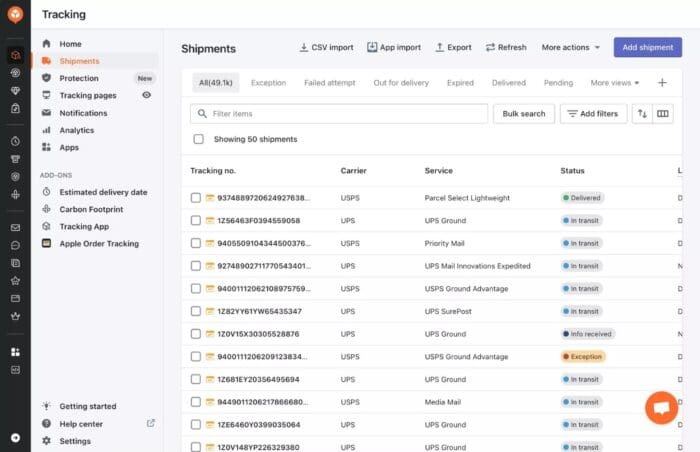
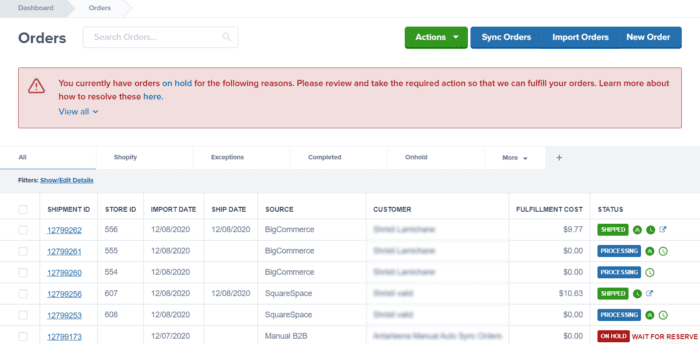
2. Integrate effective inventory management
When so many other processes depend on having accurate inventory counts, you need an effective, efficient way to get the numbers right. While many ecommerce platforms allow you to do this, using dedicated fulfillment solutions like ShipBob’s can help you track inventory across multiple warehouses and locations seamlessly.
3. Upgrade your analytics
Shipment visibility isn’t just about tracking individual packages; it’s about getting a holistic view of your business’s fulfillment arm to find inefficiencies. Ecommerce platforms are usually limited in their analytics, but ShipBob and AfterShip Tracking let you really dig into your data all from one convenient dashboard.
For example, ShipBob’s dashboard automatically tracks key shipping metrics across methods and states, and even provides data on the ideal inventory allocation and distribution for your brand based on your shipping history.
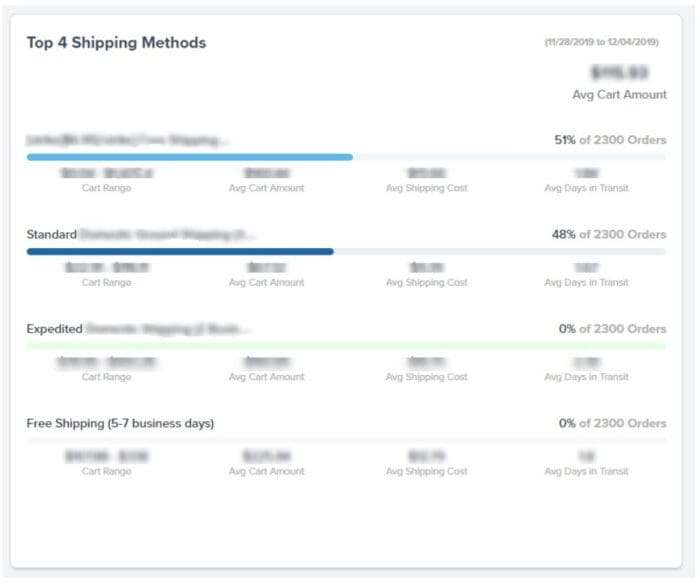
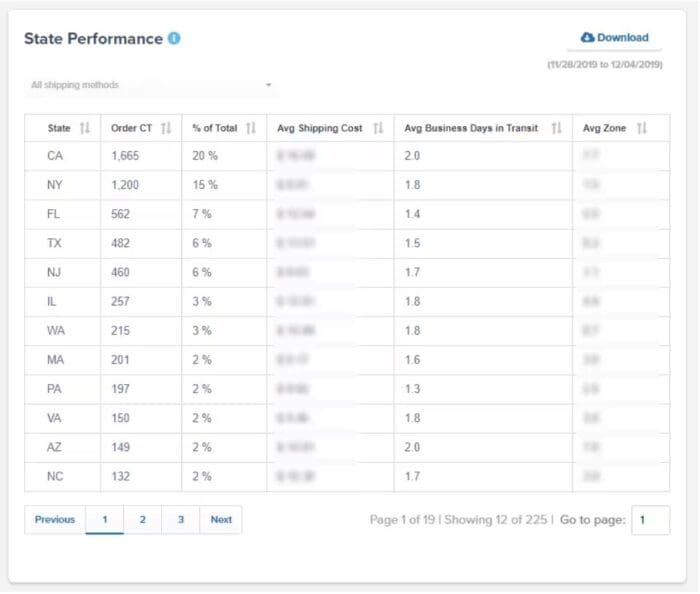
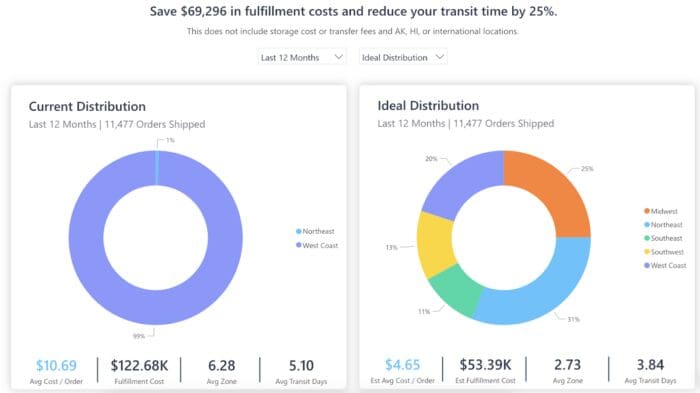
4. Automate processes where possible
Automation can be intimidating to the uninitiated, but there are a ton of intuitive platforms you can start using—even if you don’t have any technical skills. ShipBob, for example, allows users to automate everything from fulfillment to order processing without any code.
5. Improve communication with customers
Shipment visibility can completely transform a customer’s experience, but only if you communicate updates proactively. Assigning these tasks to your team manually can eat up precious time.
However, a tool like AfterShip Tracking will allow you to create advanced workflows to automatically send real-time shipment updates and create beautifully branded tracking pages on your domain. These two features will help you create a seamless buyer journey after checkout.
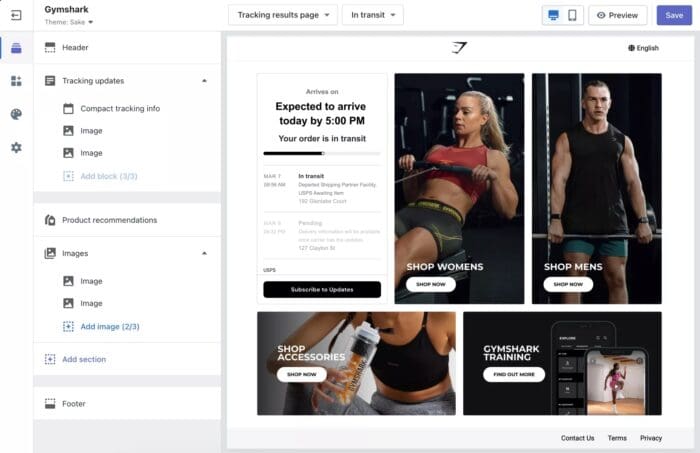
6. Partner with reliable shipping tech and service providers
Evaluate your current partners and determine which ones bring value to your business and which ones you should replace. Do this regularly with new partnerships—whether they’re shippers or logistics providers—so you can ensure that an all-star team handles your logistics.
7. Be transparent with customers
A shipment tracking page is a great way to give customers status updates for their orders, but it’s just the beginning. When something goes wrong, you must be as transparent as possible and communicate issues with customers promptly.
Try AfterShip + ShipBob for shipment visibility & better customer satisfaction
Real-time shipment visibility is great for logistics, inventory management, customer experience, and ultimately your bottom line—what’s not to love? Just be sure you’re implementing tools and processes that will scale with your business while remaining cost-effective, and you can transform how you fulfill your orders and delight customers.
By integrating ShipBob with AfterShip Tracking, you can unify multi-channel order logistics and expedite data consolidation. This means you can leverage ShipBob’s outsourced fulfillment solution to optimize inventory management and fulfillment, and use AfterShip Tracking as a centralized portal for all your tracking and shipment status needs through the integration. You’ll save time by unlocking end-to-end shipment visibility while identifying exceptions and responding to customer friction.
Not sure how to start? ShipBob is a fulfillment solution trusted by thousands of brands to get visibility on their shipments, manage inventory, and grow their profit margin. Between dynamic inventory dashboards and a robust warehouse management system, ShipBob is the tool of choice for ecommerce stores when it comes to shipment visibility. Click the button below to get started.
Shipment visibility FAQs
Here are the answers to some of the most common questions about shipment visibility.
Why is data important for enhancing shipment visibility?
Data is the basic unit for everything you need to know about your shipments. It includes delivery updates, inventory, logistics, and just about every other process. Platforms that help you analyze that data can accelerate decision-making while reducing risks for everyone involved.
How does improved shipment visibility contribute to customer satisfaction?
When it comes to your customers, improving real-time visibility on their shipment lets you do two things:
- Be more transparent about the shipping process from the outset.
- Give customer support teams better shipment status information when things go wrong.
This extra information helps keep customers in the know while allowing you to address issues more promptly.
What role does ShipBob’s network of fulfillment centers play in improving shipment visibility?
ShipBob is an end-to-end fulfillment provider that gives you the data you need to make every aspect of fulfillment more efficient and cost-effective in real time. You get deep, updated data at every stage, meaning you won’t have to build your own shipment visibility processes.
